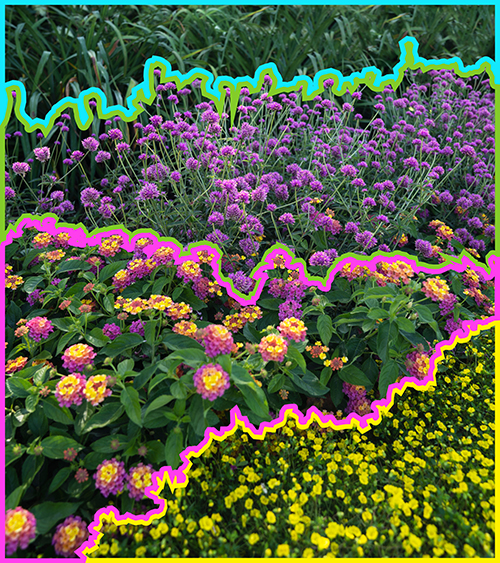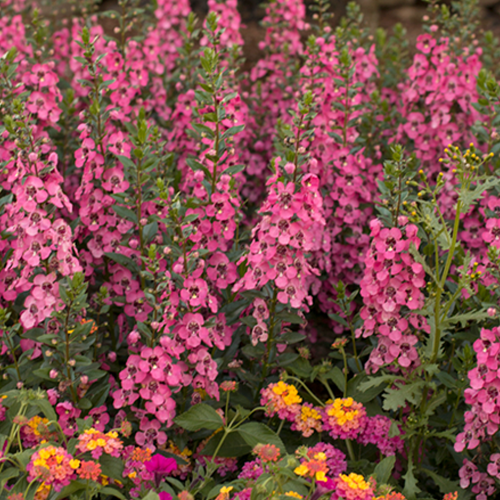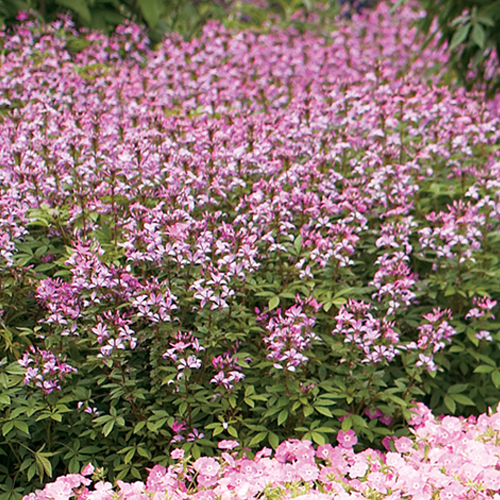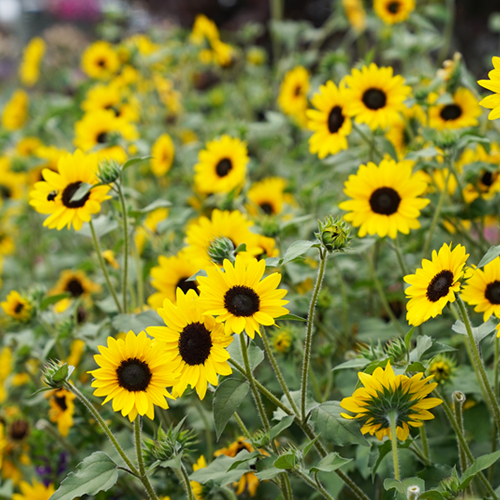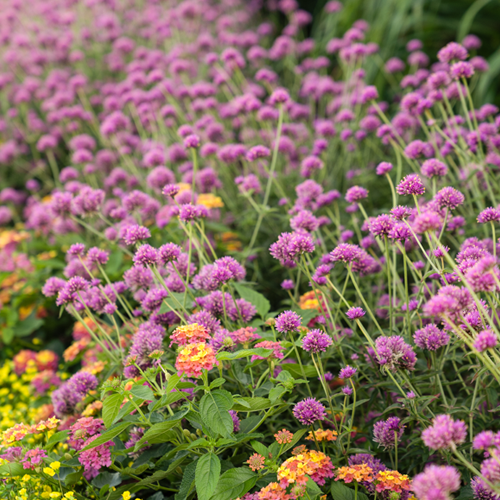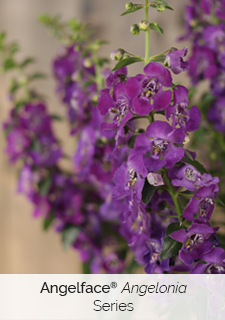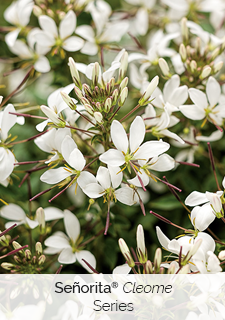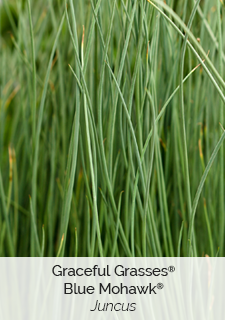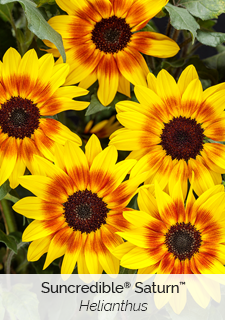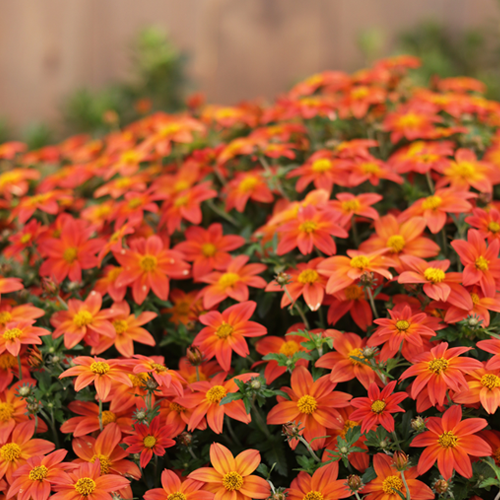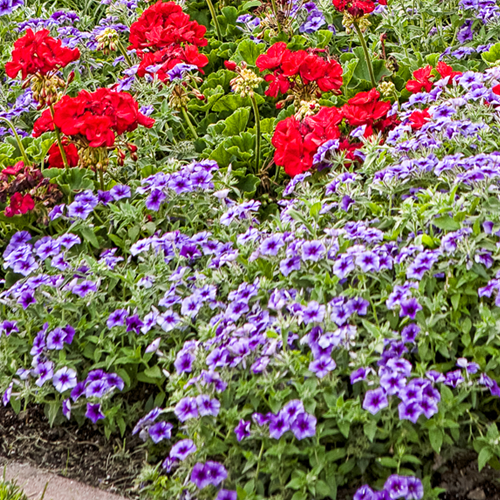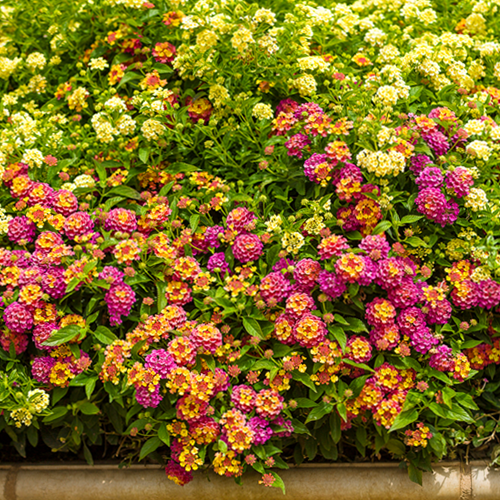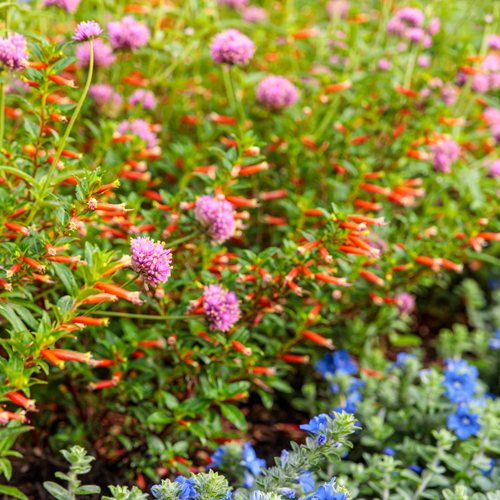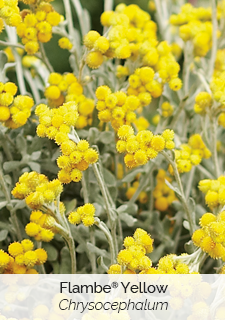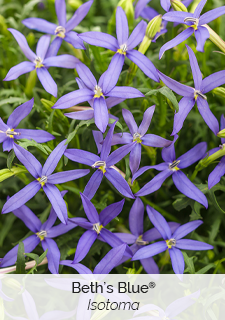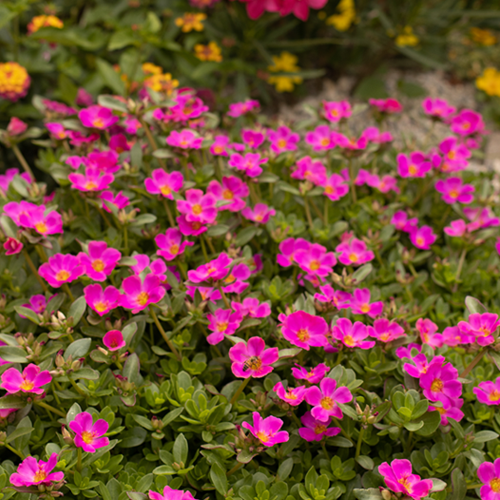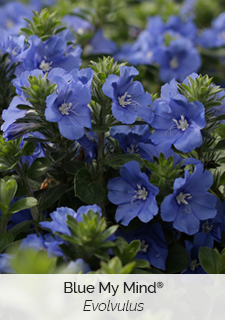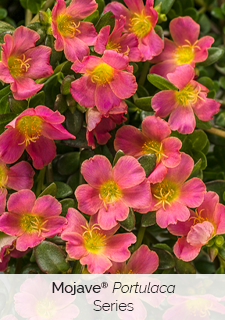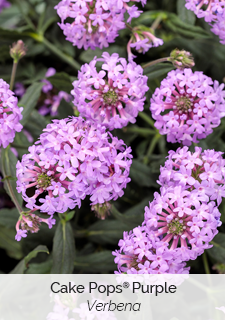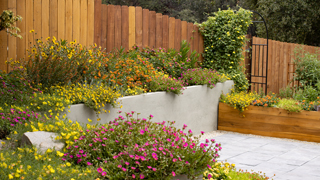
Sun-Loving Plants Guide
If you have just moved into a new home, you may find that the trees in your area are still young, offering very little shade. Maybe you’ve planted shrubs in your yard and are waiting for them to get established. If you find yourself gardening in a sunnier area than you bargained for, this sun-loving annuals guide will help you create landscape plantings that will thrive in full sun conditions.
PLANNING A LANDSCAPE
Planning a new landscape is a bit like trying to organize family members in a family photo. You want taller people in the back, shorter people in the front, and you want to stagger people a bit so that everyone is seen by the camera. The same can be said about designing a successful landscape. Arranging plants by height is a great place to start when planning a landscape. We’ve applied the family photo concept to the provided diagram. Check out the diagram and key to see how plants of different heights interact with each other. Just like with a family photo, start your landscape layout by starting with your back row plants and working forward. The top row outlined in bright blue represents an optional shrub or tree layer that could become the tallest part of your landscape when established. Keep it in mind when thinking about plant heights. Below you’ll find our top recommendations for sun-loving landscape annuals, organized by height.
UNDERSTANDING A PLANT’S SUN REQUIREMENTS
The back of a plant tag has a lot of useful info. Study the back of your tag to find the light requirements needed for a plant to thrive. In this case, look for plants that prefer Full Sun conditions (6+ hours of direct sun per day)
SUN EXPOSURE TERMINOLOGY
Full sun – 6 or more hours of direct sun per day
Part sun – 4 to 6 hours of direct sun per day, including some afternoon sun
Part shade – 4 to 6 hours of direct sun per day, mostly before midday
Full shade – less than 4 hours of direct sun per day

BACK ROW
(TALLER PLANTS)
MAX HEIGHT: 2′-4′ (Except Graceful Grasses® Vertigo® Pennisetum)
Ranging in height from 2-4′, this row of plants can provide a backdrop for shorter plants, create a privacy screen, or an interesting texture layer. Grasses like Vertigo Pennisetum can become a dramatic focal point, reaching up to eight feet in height!
Tall Plants

MIDDLE ROW
(MEDIUM-HEIGHT PLANTS)
MAX HEIGHT: 1′-2′
Once you’ve chosen your tall back row plants, move on to finding them some friends with these medium-height varieties. These reach a maximum height of one to two feet.
Medium-Height Plants
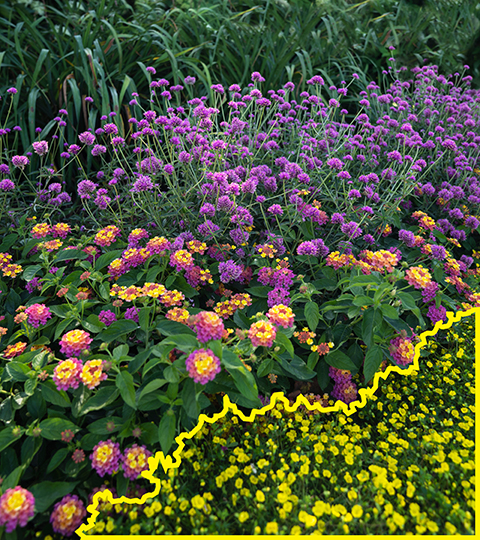
FRONT ROW
(SHORTEST PLANTS)
MAX HEIGHT: 5″-14″
Reaching a maximum height of 5-14″, these short or mounding plants are your front row. They can be used to create borders or fill in the gaps of your landscape.
Low or Spreading Plants

USEFUL LINKS
![]()
Fun Fact
Many of these tough plants are also pollinator magnets! Incorporating them into your landscape will help support your local populations of butterflies, birds, and bees.

